What to Do with Composting Toilet Waste:
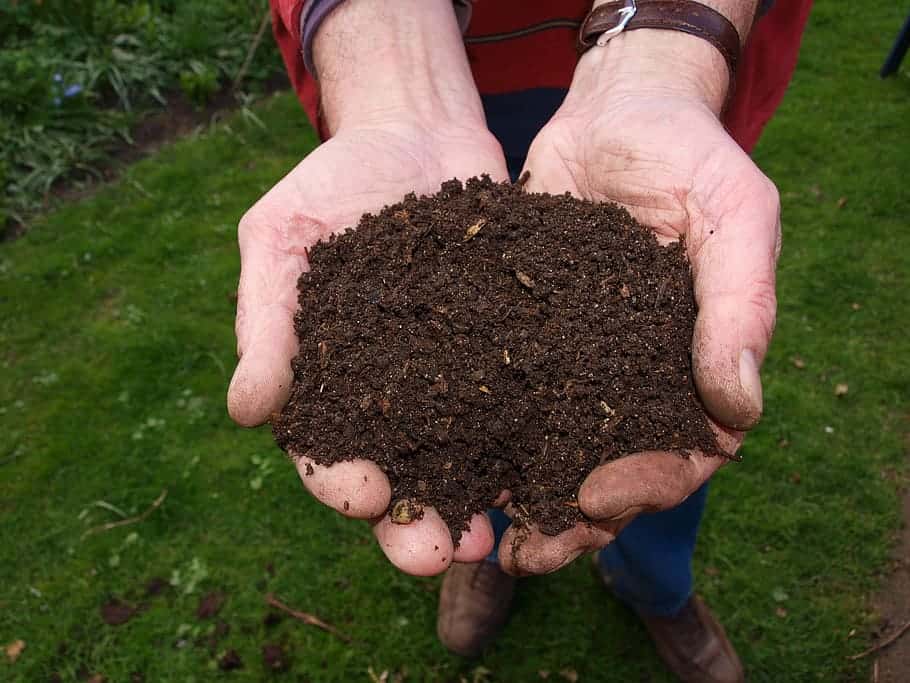
Despite being an old technology, modern composting toilets are rapidly becoming more popular in the world of green living.
The idea behind composting toilets is that all human waste can be broken down by natural bacteria into a safe, odorless, and nutrient-rich fertilizer for plants.
However, many people have concerns over what to do with composting toilet waste.
If you are considering purchasing a composting toilet, whether, for your tiny house, home, cabin, or RV, it is important to know what to do with the waste.
This article will share some tips for handling composting toilet waste.
Where to dispose composting toilet waste
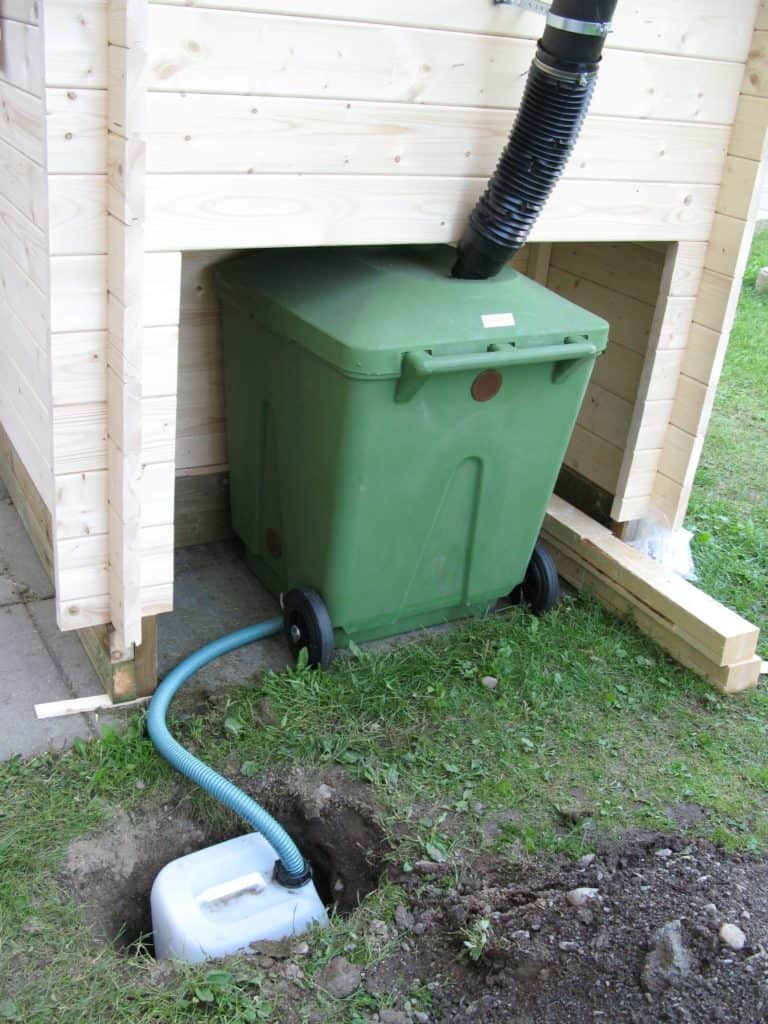
Waste from a composting toilet is made up of organic materials and must be disposed of properly.
Here are some questions that you may have about disposing of this type of waste, with answers to them.
Where should I dispose of the composting toilet waste?
Composting toilets produce a lot less solid waste than traditional flush toilets because they use natural decomposition methods to break down the material.
This means that there is no need for plumbing or septic systems as would be found in other types of homes or buildings.
There are several options for disposing of this kind of organic matter, and we’ll go over them below
1. Designated dump station
It’s best to take your composting toilet waste to a designated dump station and dispose of it there to be processed at sewage sludge or wastewater treatment plants.
If you have a designated dump station near your location, ask them about their protocol for loading. Some states require liquid added to solid waste and vice versa.
2. Garden or backyard
If you have a garden or backyard, another good option would be to use it as a disposal place for composting toilets.
Don’t mix the waste with other things before it’s processed; that could potentially introduce harmful bacteria or pathogens into the composted material.
Organic matter like human poop can be turned into the soil by the use of worms, bacteria, fungi, etc. This is beneficial when used on plants and trees as human poop has rich nutrients as fertilizer.
3. Established compost pile
A compost pile is the best place for decomposing solid waste to collect and mature. To allow for this process, the pile should be built over a bed of straw or hay or sawdust or some other kind of natural cover.
You must use a compost pile with adequate aeration and moisture for aerobic decomposition.
The heap must be located far enough away from your house or garden to retain sensible odors and must not be conditioned to use as ready-made potting soil.
Is it legal to dump composting toilet waste on the ground?
It is not legal to dump composting toilet contents on the ground because it takes a long time for human waste to fully decompose and kill any potential parasites or diseases in the process.
Additionally, having this type of substance near ground level can contaminate groundwater and other sources of drinking water as bacteria in the sewage can find their way into these areas through rainfall percolation and runoff.
Where NOT to dispose of compost human waste
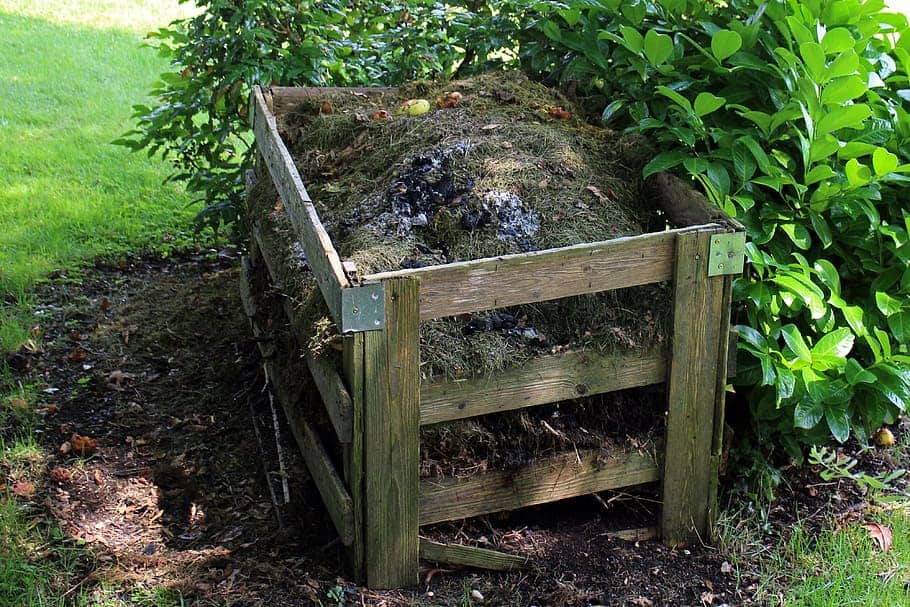
While there are a number of choices and ways that you can dispose of your compost, it is important to not do so in certain places for safety reasons.
Let’s take a look at some options for disposing of your human compost safely!
- There are some places where it is not advisable to dispose of composting toilet waste, such as near food crops or in areas with high water tables
- Avoid disposing of composting toilet wastewater in sanitation systems – this can lead to clogging the sewer system or sewage overflows and cause potential health problems for those living nearby
- If you’re not sure where to put your composting toilet waste, consult a professional who specializes in these types of toilets
- Always make sure that you have an adequate amount of space reserved for storing any unused compost material in a waste container until it’s ready for disposal
- Consider building an outdoor composter if you don’t want to store the unused material inside a trash bin
Can you pee in compost piles and where to dump urine from composting toilet?
It is possible to pee in compost piles! The urine and other organic matter in a compost pile will break down into fertilizing material through the microbial process of decomposition.
The bacteria that produce the heat in a compost pile are large enough to keep from being killed by ammonia or urea.
Composting toilets make it convenient to separate and use solid waste for fertilizing, on the one hand, and separating and adding liquid manure to a water-rich landscape as mulch.
Adding liquid manure from septic tanks can cause environmental problems when you don’t filter out pathogens before introducing them to an open environment.
How often do you have to empty composting toilets?
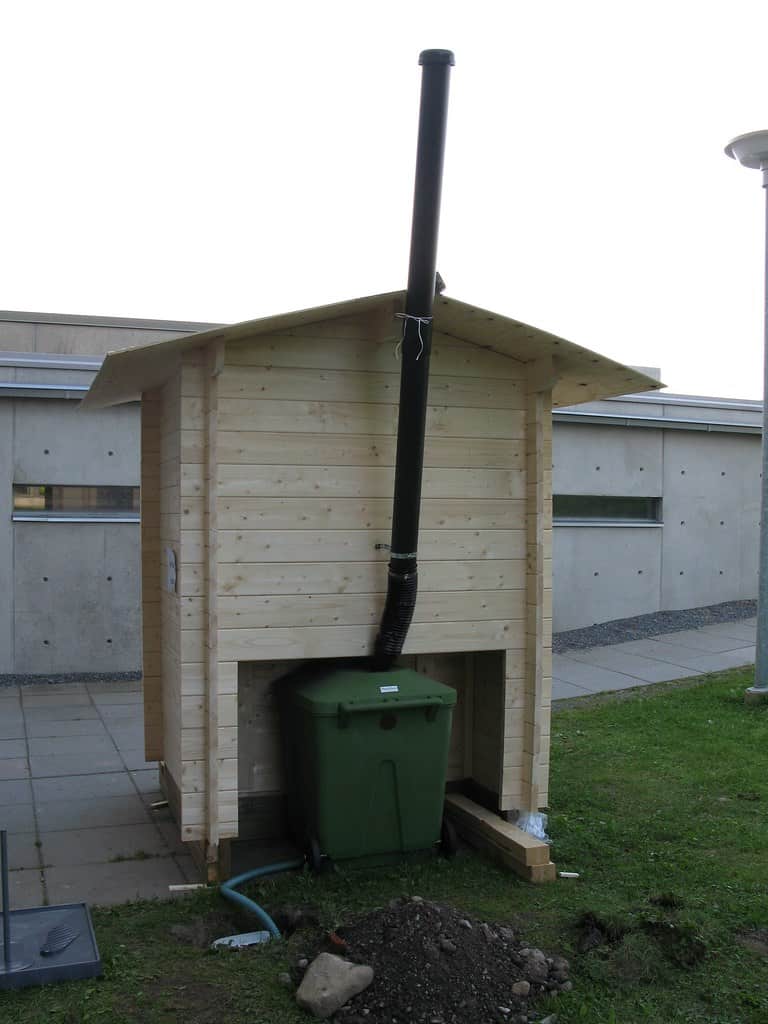
Composting toilets need to be emptied every 2-4 months – depending on how often it is used and by how many people. It’s important to keep a composting toilet well ventilated to avoid excess odors.
Composting toilets will not have a bad smell if they are properly maintained and used correctly.
They do not result in soiled water, they do produce a compost liquid because the liquids that are flushed through decompose naturally in the process of aeration and water evaporation.
Therefore, emptying of these types of toilets is necessary only every few months or as needed, depending on use.
It is suggested that homeowners should empty their toilet according to its capacity (number of people using it) as well as the amount of time it has been in service.
Dispose composting toilet waste: step-by-step

It is important for those who are using a composting toilet to be aware of the proper way to dispose of their waste.
Here are some easy steps on how to dispose of composting toilet waste:
Preparation
Wherever you’re going to have a big enough space, it’s essential to identify the area or space where you’ll be putting your compost pile. You do not want this near any trees, under low-hanging branches, or near garden beds.
Compost heaps need to be about 4x4ft in size, positioned at least 4ft off of the ground. The more depth you put on when making your piling, the less work will need to be repeated with volume addition. To decompose properly it needs a balance of microbes and oxygen.
Building up a compost pile with sawdust will help the compost come along faster, and encourage it to go well. Sawdust is definitely not necessary, but you might as well take advantage of it.
Collection
In order to collect the composted material, an external waste container needs to be used.
The contents are typically collected about once per 3 months and transferred from the collection composting bin into a larger “finishing” or “holding” compost pile where it will finish decomposing before being ready for application on lawns or gardens as fertilizer.
Follow these steps for collecting waste:
1. Remove the waste from the toilet bowl with a bucket or compostable trash bag.
2. Put on gloves and use a scoop to remove all solid waste.
3. Place all solids in your composting toilet’s waste tank.
4. Add water to moisten the solids before adding them to your composting pile.
5. Add peat moss or coconut fiber(coco coir) and cover the waste with hay or sawdust to absorb it while still keeping it aerated so microbes can protect the composting process.
6. Every few weeks, remove the composting material from the bottom, mix with soil, and bury it back under other layers of potting mix or in your garden to make the decomposition process faster.
RV composting toilet disposal
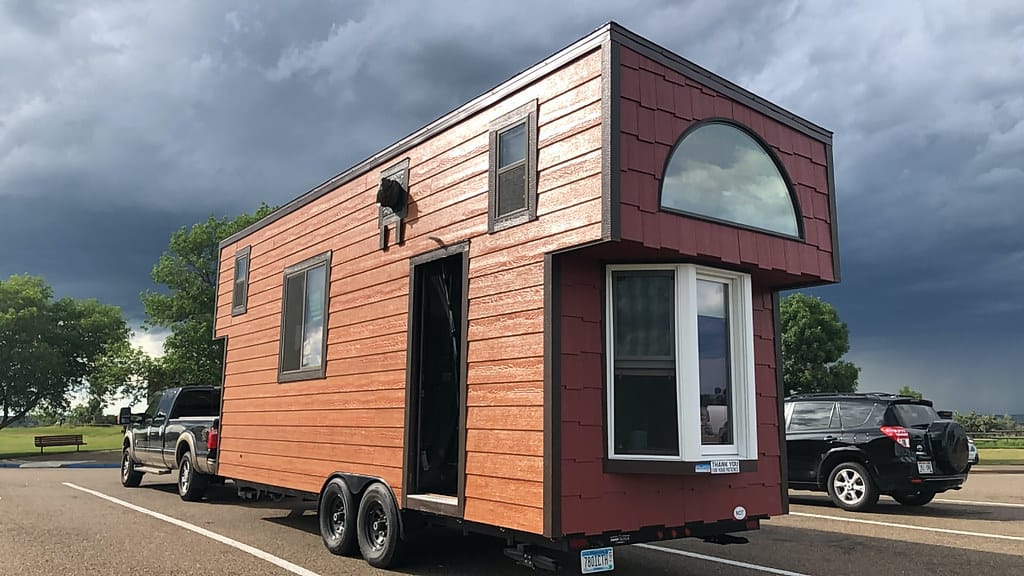
One of the many things that you will need to plan for when living in an RV is how to dispose of your waste.
Composting toilets, such as Nature’s Head Composting Toilet, are a great way to produce and maintain high-quality compost.
RV composting toilet disposal is an important aspect of RV living that can be handled in a variety of ways. The most popular way to handle the issue is with a black water tank, which collects and stores all the waste until it goes into a sewage treatment plant. RV black water tanks that are built into the RV are standard with most models.
Problems
The main issue is that they have to be emptied at least every two weeks, but ideally weekly, and this can get expensive if you’re using a public dumping station.
If you don’t want to worry about emptying your tank yourself, then it’s best to use an RV park or campground with dump stations.
If you plan on composting toilet waste, then making sure that you only collect human waste from your family is important as well as keeping out other fecal matter such as pet feces or anything else that might contain hazardous pathogens.
Feces should be broken down by the microbes in the Nature’s Head Composting Toilet and shouldn’t cause any odor problems.
To make sure that your composting toilet is working properly, it’s best to deodorize it with baking soda or keep an air freshener nearby to eliminate any odors that might get out.
Most people install a fan inside their RV and place a carbon filter in front of it if there are any issues with unpleasant smells throughout the trailer.
The best way to get rid of your RV composting toilet waste
Typically, RV toilets are connected to a holding tank by way of a wastewater hose. Disposal is often as simple as emptying the tank when it becomes full.
In order to dispose of RV toilet waste where sewers aren’t available, there are two options: dumping manually or dumping in special containers installed at a designated location nearest your stay site.
These tank-free dumping options are the best type of RV composting toilet disposal.
To dump manually, just follow these steps:
1. Find a spot to dump the black water tank appropriate for dumping waste, such as near a dump station.
2. Open the cap on your holding tank and empty all of its contents into an RV composting toilet disposal container, either one designed specifically for your needs or any suitable plastic bucket or trash bag.
3. Once you have emptied the holding tank, close the cap immediately and be sure not to open it until you are ready to use it again for disposal purposes.
4. Finally, return the wastewater hose/hose fittings into their position on the tank and close the compartment where you keep your toilet.
To dump at a designated location, you must first find one near your stay site. Make sure the area is for RV composting toilets only a.
They can be found at many state parks, national forest recreation areas, public campgrounds, resort campgrounds, and even rest stops along some highways.
Here’s how they work:
- Find an available dumping site.
- Park in front of the container and extend your urine and wastewater hoses/fittings from the RV composter toilet compartment to hook onto its holding tank fittings once again. Open up the compartment where you keep your toilet so that you can access the hoses.
- By turning on the water valves and opening up the holding tank cap, your RV composting toilet waste will start to flow into this designated container until it is filled completely.
- Once all of the contents have been emptied from the holding tank, be sure to close its cap right away and start for home!
- Dispose of these contents in a normal landfill or dump according to local laws as well as the directions provided by whichever dumping site you used.
It’s very important that you monitor your RVs sewage capacity and dump regularly if you choose the first option.
Many RV composting toilets can hold up to 30 gallons of waste, or more depending on their respective model. You should be able to travel at least five hundred miles before you have to do a manual dump, but it will take only about five minutes to empty your holding tank manually into any receptacle that is set up for such purposes.
Be sure that your method complies with national park service regulations and always follows the directions given by the facility staff for proper disposal of waste material.
Compost toilet fertilizer for your garden
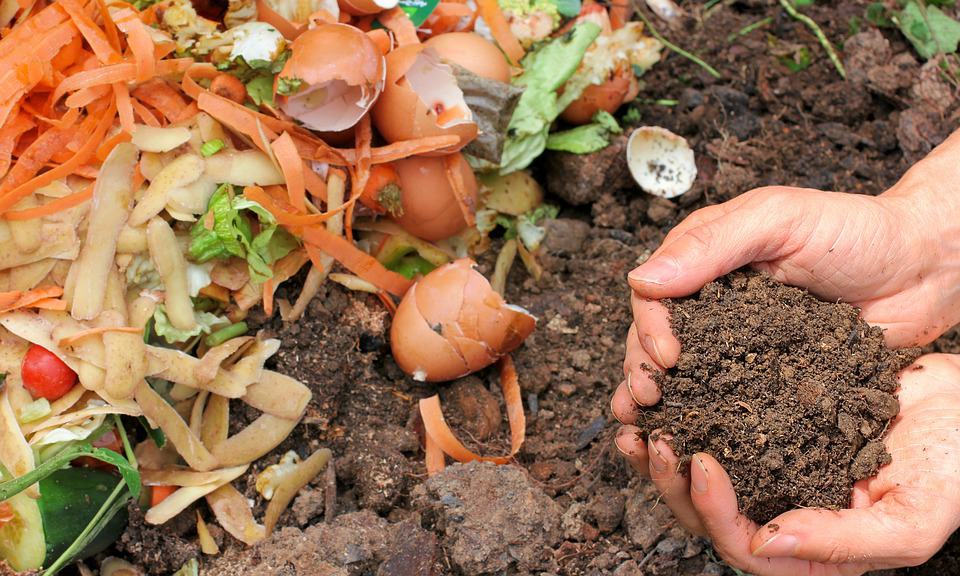
If you’re looking to grow a lush, green garden this year without breaking the bank, then your composting toilet might be your best friend.
An alternative to chemical fertilizers, composting toilets produce a nutrient-rich fertilizer that can be used in your garden.
The process of composting toilets relies on microorganisms breaking down organic materials into nutritious soil. This process is done without any need for chemicals, creating an environmentally friendly way to dispose of waste while producing high-quality fertilizer at the same time.
Conclusion

A composting toilet is an excellent option for those who want to be more environmentally conscious and minimize their ecological footprint.
Although it may seem daunting at first, the process of using one isn’t too complicated after you get used to it.
By following these tips for handling your waste, you can ensure that the system works effectively and know what to do with composting toilet waste to create nutrient-rich soil that will benefit your garden or yard.
Don’t forget to get all your composting questions answered here, on our FAQ page!

